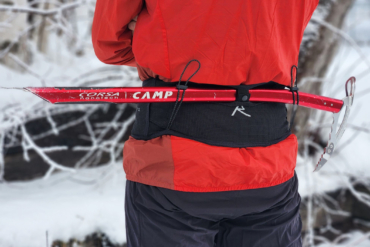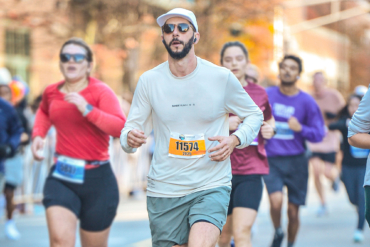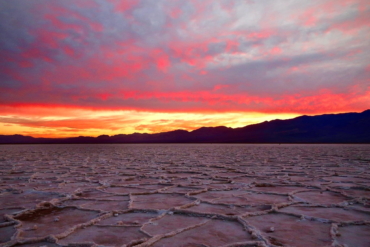Jordan Marie Daniel gained recognition in the running community when she ran the 2019 Boston Marathon with a red handprint over her mouth to symbolize Indigenous women silenced by violence. On May 5, you can join her in a virtual run to further raise awareness of this epidemic.
In addition to the iconic handprint, though, Jordan Marie Brings Three White Horses Daniel also ran the Boston Marathon with the letters “MMIW” painted on her leg. This drew awareness to the Missing and Murdered Indigenous Women movement.
It was both an expression of activism and the motivation for her run, which, for Daniel, are interwoven. Every mile, Daniel said a prayer for a missing or murdered Indigenous woman or girl.
“I chose to use my platform at Boston Marathon to run in prayer and create an intentional space to give back to the loved ones who have been taken from their families and honor them in this way,” Daniel told us.
Daniel a fourth-generation competitive runner and a sponsored runner for Rabbit, Altra, and Ultimate Direction. She is the founder and executive director of Rising Hearts. She continues to raise awareness of several issues through her running and social media, including this week’s virtual Running for Justice race.
Virtual Running for Justice Virtual 5K, 10K, & Half
Daniel’s appearance and performance at the Boston Marathon raised eyebrows — and eventually awareness. Curious spectators looked into the runner with a red-paint handprint over her mouth and the letters “MMIW.”
“That’s where I realized the power of social media,” Daniel said, “and sharing the names and resources and statistics included in that post.”
The 26 names represent just a fraction of those reported missing every year. And among those, only a small percentage are actually entered into police databases, according to a 2016 report by the Urban Indian Health Institute.
On May 5, Daniel will spearhead Running for Justice: Remembering Missing & Murdered Indigenous Relatives. It coincides with the National Day of Awareness for Missing and Murdered Indigenous Women.
Anyone can take part by signing up for one of the specified distances. On May 5, track your run with a stopwatch or a GPS app like Strava. After your run, you can upload times (and photos) through the event link on elitefeats.com through May 9. Then, search for your name and enter your results.
Additionally, runners are encouraged to wear red in solidarity and tag @niwrc and @rising_hearts in social media posts. This isn’t about winning a medal or the fastest time. It’s a way to build a community around awareness — and a first step toward ending the epidemic.
Through her organization Rising Hearts, Daniel seeks to raise $250,000 for charities, including the National Indigenous Women’s Resource Center. The nonprofit’s mission is to end gender-based violence and provide resources, technical assistance, and policy development to strengthen tribal sovereignty.
That fundraising goal was inspired by Finish the Run, for Ahmaud Arbery, which raised that amount. “That’s a run I participated in, that I raised awareness about,” Daniel said. “I wish people cared about Indigenous people in this way because this is happening to us every single day as well.”
Join the Running for Justice Virtual 5K, 10K, & Half HereStatistics on Missing and Murdered Indigenous Women
- In 2016, 5,712 Indigenous women and girls were reported missing — only 116 were logged into the Department of Justice database.
- Murder is the third leading cause of death among Indigenous women according to the CDC.
- The UIHI identified 506 cases of MMIWG across 71 selected urban cities, 75% of the cases had no tribal affiliation listed.
- 66 of the 506 cases were tied to domestic and sexual violence.
- 4 in 5 will experience sexual violence/domestic violence/violence in their lifetime.
Source: Urban Indian Health Institute
Jordan Marie Brings Three White Horses Daniel: Why She Runs
Daniel’s advocacy is the culmination and overlap of events in her life. She began as an ally, a community organizer, and a prayer runner after bearing witness to domestic violence as a young girl. She attended what she sensed was an uncommon number of funerals — and many of the deaths involved homicide or sexual assault.
Before going off to college at the University of Maine in 2006, her mom joined a Lower Brule Sioux search party for a missing local woman. The party eventually found the woman — she had been murdered. To this day, the victim’s family continues to seek justice.
According to Daniel, she felt the violence was, perhaps, an isolated problem in her own community.
Then, a Native American studies class in college opened her eyes to other Indigenous communities, including the Highway of Tears in Canada, where thousands of mostly Indigenous women have disappeared since the 1970s.
“That really started this breadcrumb effect of connecting the dots and seeing that violence is very present across all our communities and that Indigenous peoples are vulnerable and have targets on their backs,” Daniel said.
Visibility for Missing & Murdered Indigenous Relatives
Daniel is about action, and while awareness of MMIW is up through shares and comments, there’s still a big gap between that and follow-through.
“I see a lot of performative actions and allyship across all movements,” Daniel told us.
She watched the support for Standing Rock pipeline protests dwindle when it came to further supporting Indigenous treaty issues. More recently, she’s seen common issues at the base of the Black Lives Matter movement and protests of summer 2020. Yet issues for Native Americans fail to receive the same level of visibility.
“Indigenous people are constantly fighting their own erasure, that they don’t exist after 1900,” she said.
Even among fellow advocates, it happens. She points to conversations of white colonialism that begin with the arrival of slave ships, which skips over at least 150 years of Indigenous peoples being enslaved and murdered. She paraphrases Annita Lucchesi of the Sovereign Bodies Institute, noting that this is a fight for recognition for people who are missing in life, missing in the data, and missing in the media.
This type of erasure corresponds directly with the lack of reporting of crimes against Indigenous peoples. A report on missing persons and violence against Indigenous people by the Urban Indian Health Institute found that police often neglect to check the “Native American” box, making it more difficult to track the problem.
Calling on Allies
“We are all on Indigenous stolen lands. We are all surrounded by communities of people that still exist today, living among us in our neighborhoods,” Daniel said.
Some conversations need to continue with non-Indigenous people to reframe and reshape understanding. They can start by listening to Indigenous voices and knowledge-keepers rather than relying on the history written by white settlers.
Daniel said, “This is part of the work that I enjoy doing as part of what justice, equity, diversity, and inclusion look like. It’s all about being a voice and an advocate for a community but also bringing people along with you.”
Daniel uses her media to invite a larger audience to learn in ways beyond just liking a photo, such as sharing opportunities, webinars, and even joining run club teams to localize running with advocacy. You can keep up with her efforts through Rising Hearts or on Instagram.









